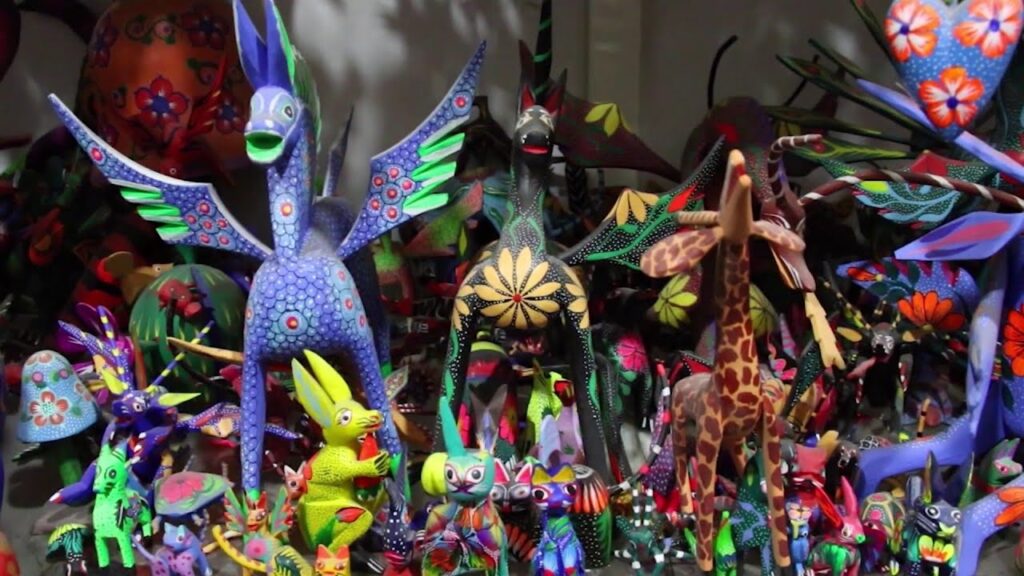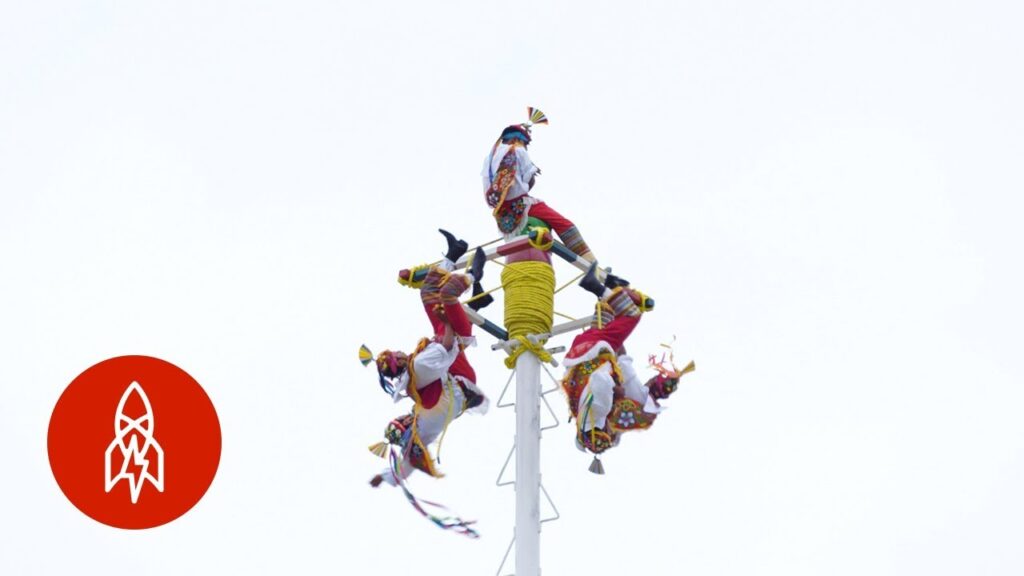Unveiling the True Origins of Alebrijes
The mystery shrouding the colorful and whimsical creatures known as Alebrijes is as captivating as the art itself. Tracing back to the 20th century, these fantastic figures emerged from the vivid imagination of a Mexican artist, Pedro Linares López. Taken ill in the 1930s, Linares slipped into a feverish dream wherein he envisioned a forest populated by surreal, chimeric animals chanting, «alebrijes». Upon his recovery, he set out to bring these dreamt anomalies into the tangible world using the papier-mâché technique.
Fusing his own creativity with the rich folk art traditions of Mexico, Linares’ art resonated with many, but it wasn’t until famed Mexican artists Diego Rivera and Frida Kahlo encountered his work that Alebrijes gained widespread admiration. Rivera, in particular, was enamored by these fantastical creatures, which led to increased public interest and demand. This surge of popularity provided a crucial platform for Alebrijes, projecting them into the realm of cultural significance far beyond their humble origins in Linares’ workshop.
While Linares is credited with the inception of Alebrijes, the art form has been embraced and reinterpreted in other regions of Mexico, most notably Oaxaca. Artisans from this southern state have integrated their ancestral wood carving traditions into the crafting of Alebrijes, taking inspiration from the local flora and fauna to carve and meticulously paint each figure. This adaptation has imparted a distinctive regional mark on the Alebrijes, with Oaxacan carvings becoming particularly renowned for their complexity and detailed finishes.
Today, the production of Alebrijes involves an entire community of artists, with families often specializing in specific stages of the creative process. From the initial carving of the copal wood to the intricate painting and final touches, each Alebrije is a labor of love and a testament to collaborative artistic expression. As much a symbol of Mexican cultural heritage as it is a testament to the power of dreams and imagination, Alebrijes continue to captivate and inspire, transcending their origins to become icons of Mexican artistry and ingenuity.
The Linares Family: Pioneers of Alebrijes
The Linares family’s journey into the whimsical world of alebrijes began with Pedro Linares, who found himself ill and bedridden. It was during this time that he dreamt of a strange place resembling a forest, where he encountered fantastical creatures with complex forms and vibrant colors. Upon his recovery, Linares began to recreate these visions in papier-mâché, giving life to the first «alebrijes». These unique creations quickly garnered attention and transformed the family’s legacy.
The Artistic Techniques of Alebrijes
Tapping into the rich tapestry of Mexican folk art traditions, the Linares family elevated alebrijes to a form of high art through their masterful techniques. By layering papier-mâché over wire frames and using an array of handmade paints and varnishes, they achieved a fusion of strength and delicacy in their sculptures. Their repertoire expanded to include mythical creatures and hybrids, each piece meticulously crafted, boasting a kaleidoscope of patterns and hues.
Continuing the Legacy
Today, the Linares family continues to be a symbol of Mexican artistry and cultural expression. Their alebrijes not only reflect the imaginative roots of a bygone era but also capture the evolving ethos of contemporary art. With each passing generation, the family ensures that the tradition of alebrije making is preserved, mentoring young artisans and constantly innovating their craft to astonish art enthusiasts around the globe.
The Misconception About Oaxaca and Alebrijes
When it comes to Oaxaca, one of Mexico’s most culturally rich states, many travelers have long associated it with the colorful and whimsical creatures known as Alebrijes. These intricate and imaginative carvings have become a symbol of Mexican folk art around the world. However, a common misconception is that Alebrijes were originally from Oaxaca. The truth is, their history began in Mexico City with artist Pedro Linares in the 1930s. Linares dreamt of strange, fantastical creatures while ill, which upon recovery, he began fashioning from paper-mâché. It wasn’t until the 1980s that artisans in Oaxaca adopted the Alebrijes style and transformed it by using wood, giving birth to a new but different craft tradition that has since been embraced as Oaxacan.
The misleading attribution to Oaxaca is not merely a geographical slip; it underscores how cultural elements can travel and evolve, often leading to new traditions that blend external influences with local practices. Through the hands of Oaxacan artisans, the entities known as Alebrijes have undergone a remarkable transformation. These artists use copal wood to carve and then meticulously paint each figure with vibrant patterns and colors, infusing them with a life of their own. This regional touch has etched a distinct identity for Oaxacan Alebrijes, making them distinct from their paper-mâché cousins, yet many are unaware of their central Mexican roots.
As visitors delve into Oaxaca’s bustling markets and workshops filled with eye-catching Alebrijes, it is important to appreciate the layers of history behind each piece. While embracing the beauty and workmanship of the Oaxacan interpretation, one should not forget the Alebrijes’ journey from paper-mâché figures in Mexico City to revered embodiments of wood carving mastery in Oaxaca. This understanding adds depth to every traveler’s experience and respects the confluence of creativity that produces such captivating art forms – a quintessential example of Mexico’s dynamic cultural heritage.
Exploring the Roots of Alebrijes Before Oaxaca’s Fame
Among the myriad of vivid manifestations in Mexican folk art, the alebrije occupies a special place with its riot of colors and fantastical shapes. Originating in the 1930s, these unique creatures were first birthed in the fevered imagination of Pedro Linares, an artisan from Mexico City. Linares, while ill, dreamt of a strange place resembling a forest wherein he encountered bizarre animals with elements from different species, all shouting one word: «alebrijes.» Upon waking, he began recreating these figures in papier-mâché, the art form known as «cartonería.» Thus began the alebrijes’ journey from one man’s dream to a celebrated cultural symbol.
The path of the alebrije from peculiar creatures made by a single artist to an essential theme in Oaxaca’s artistic scene is a fascinating narrative of cultural exchange and creativity. As the tale is told, Linares’ alebrijes found their way to the hands of artists in Oaxaca when great Zapotec artists like Manuel Jimenez from Arrazola and Isidoro Cruz from San Martin Tilcajete saw the potential in merging their own woodcarving traditions with Linares’ dream-inspired beasts. This fusion breathed new life into Oaxacan carvings, transforming local woodwork into a canvas for portraying the surreal alebrijes, now carved from the wood of the copal tree.
Today, the alebrijes have evolved significantly in Oaxaca and retain only a nostalgic connection to Linares’ original papier-mâché figures. Oaxacan artisans have infused them with locally symbolic patterns and figures, making each piece deeply rooted in the heritage of their villages. A stroll through the vibrant markets of Oaxaca is an adventure in its own right, where travelers are sure to meet the bewildering gazes of winged lions, dragon-bird hybrids, and myriad other alebrijes that appear to be straight out of a dream. It is this constant evolution and the artisans’ personal touches that keep the tradition alive, ensuring that the roots of alebrijes flourish and spread their branches far beyond their inception in the heart of Mexico.
How the Linares Legacy Shaped the Alebrije Tradition
The story of alebrijes, those vividly colored Mexican folk art sculptures of fantastical creatures, is deeply intertwined with the Linares family, artisans who have become synonymous with the craft. The patriarch of the family, Pedro Linares López, was born in 1906 in Mexico City and initially made his living creating papier-mâché figures for carnival floats. However, it was an unexpected turn in his health in the 1930s that birthed the alebrijes. According to family lore, Pedro fell ill and dreamt of a strange place resembling a forest, where he encountered bizarre creatures with elements from different animals. Upon recovery, the images from his dreams were so vivid that he started crafting these creatures into reality.
In the decades that followed, the Alebrijes created by Pedro Linares became famous. Art enthusiasts and anthropologists took an interest in his innovative designs. The combination of Luis Nishizawa’s artistry and the ethnographic documentation by the famous artist Diego Rivera helped spread the recognition of Linares’s work both nationally and internationally. Thus, not only was an individual artist’s imagination honored, but a new cornerstone of Mexican folk art was laid down, solidifying the Linares name in cultural heritage.
Contribution to the alebrije tradition by the Linares family did not stop with Pedro. His children and grandchildren continued the art form, adding their touch and expanding the practice. Each generation of the Linares artisans brought new techniques, ideas, and styles to the alebrijes, making them more intricate and sought-after. For instance, they incorporated new materials and paints, which allowed for a broader range of textures and vibrant, longer-lasting colors. These advancements not only preserved the essence of Pedro’s original creations but also ensured their adaptation and relevance in contemporary art and culture.
Today, the Linares name carries a dual significance in the world of alebrijes. It represents both tradition and innovation within the craft. The family workshops in Mexico City continue to be revered sites where the alebrije-making process is witnessed and appreciated by tourists and art collectors alike. Moreover, the alebrijes are a source of national pride, signifying the resilience and creativity of Mexican artisanship.
The power of the Linares legacy in shaping the alebrije tradition is best understood when observing the broad spectrum of influence these creatures have had, and continue to have, on Mexican culture. Major celebrations like the Day of the Dead often feature alebrije parades, and these figures are essential items in Mexican homes for their believed protective powers. Indeed, the Linares family not only spawned a new dimension in folk art but enchanted an entire nation with these dream-like sculptures, ensuring the alebrije remains a cherished symbol of Mexico’s rich artistic tapestry.



